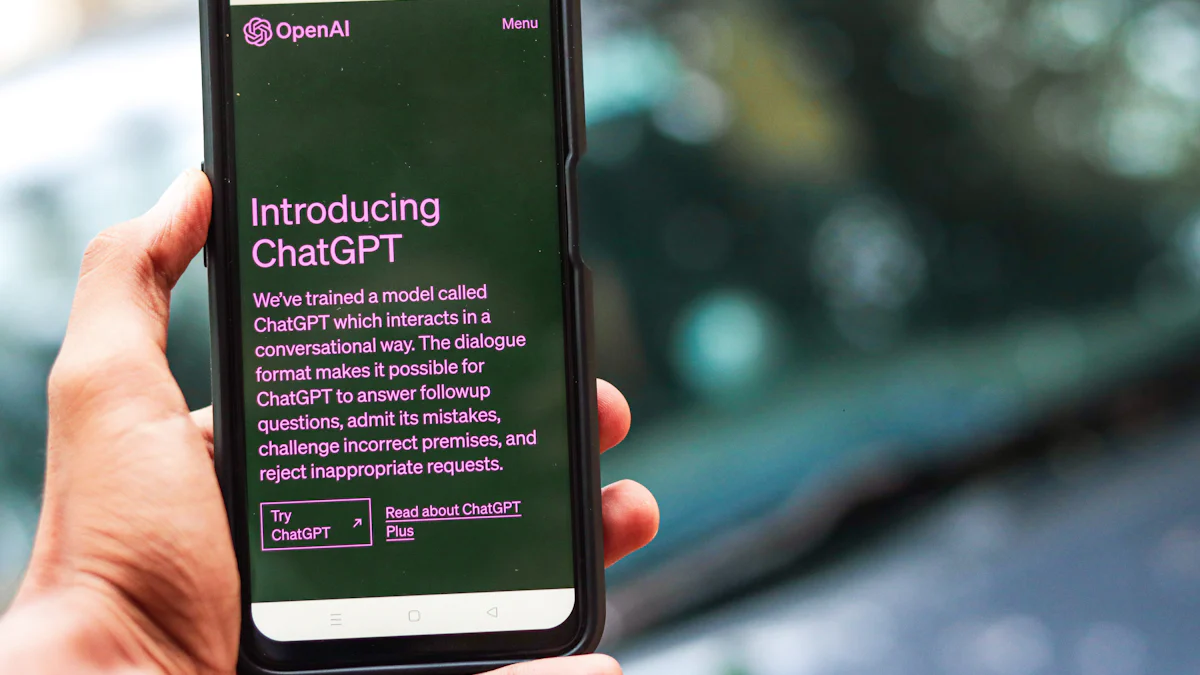Chatbots and Virtual Assistants: How Do They Differ?

Artificial Intelligence has revolutionized communication, with the global AI market expected to soar to $407 billion by 2027. Businesses are increasingly adopting AI technologies to streamline operations and improve customer engagement. Understanding the differences between conversational AI chatbots vs assistants is essential for companies aiming to fully utilize AI's capabilities. Chatbots are adept at handling specific tasks such as customer support, whereas virtual assistants provide a wider range of functionalities, serving as personal aides. A comprehensive comparative analysis of these tools will highlight their unique features and applications. Platforms like Myloves showcase the innovative use of AI, offering personalized experiences through an AI lover interaction.
Understanding Chatbots

Definition and Basic Functionality
Chatbots represent a significant advancement in AI technology. These tools automate interactions with users through text or voice interfaces. Chatbots function by interpreting user input and responding with pre-defined answers or actions. Natural language processing (NLP) plays a crucial role in enabling chatbots to understand and process human language.
Common platforms for chatbots include messaging apps like Facebook Messenger, WhatsApp, and Slack. Businesses integrate chatbots into websites and mobile apps to enhance customer engagement. These platforms provide seamless interaction between users and businesses.
Types of Chatbots
Chatbots come in two primary types: rule-based and AI-powered. Rule-based chatbots operate on a set of predefined rules. These rules dictate how the chatbot responds to specific inputs. Users interact with these chatbots through a decision tree structure. Regular updates and maintenance ensure the chatbot remains effective.
AI-powered chatbots utilize machine learning algorithms. These chatbots learn from interactions and improve over time. AI-powered chatbots offer more flexibility and adaptability compared to rule-based ones. Businesses often prefer AI-powered chatbots for complex tasks due to their advanced capabilities.
Use Cases for Chatbots
Chatbots find applications across various industries. In customer service, chatbots handle inquiries, resolve issues, and provide information. These tools reduce wait times and improve customer satisfaction. AI chatbots analyze customer data to offer personalized support.
In e-commerce, chatbots assist customers in finding products, placing orders, and tracking shipments. Chatbots enhance the shopping experience by providing instant responses and recommendations. Businesses leverage chatbots to streamline operations and boost sales.
Lead generation benefits significantly from chatbots. Chatbots engage potential customers, qualify leads, and collect contact information. These interactions occur in real-time, increasing the efficiency of lead generation efforts. Businesses use chatbots to nurture leads and drive conversions.
Exploring Virtual Assistants

Definition and Core Features
Virtual assistants represent a significant advancement in AI technology. These tools operate by using artificial intelligence to recognize and respond to human speech. Virtual assistants simulate human conversations through text or voice-based interfaces. Businesses increasingly use these tools for marketing, content production, and customer support.
How virtual assistants operate
Virtual assistants utilize machine learning and natural language processing. These technologies enable virtual assistants to understand and process complex interactions. Virtual assistants learn from user interactions and improve over time. This adaptability allows virtual assistants to handle a wide range of tasks efficiently.
Integration with smart devices
Integration with smart devices enhances the functionality of virtual assistants. Virtual assistants connect with various smart home devices, allowing users to control their environment. Users can manage lighting, thermostats, and security systems through voice commands. This integration provides a seamless and convenient user experience.
Popular Virtual Assistants
Several virtual assistants have gained popularity due to their advanced capabilities. These virtual assistants offer diverse functionalities and cater to different user needs.
Examples like Siri, Alexa, Google Assistant
- Siri: Apple's Siri assists users with tasks on iOS devices. Siri manages schedules, sends messages, and provides information.
- Alexa: Amazon's Alexa controls smart home devices and plays music. Alexa offers a wide range of skills and integrations.
- Google Assistant: Google's virtual assistant provides personalized recommendations. Google Assistant helps users with navigation, reminders, and more.
Use Cases for Virtual Assistants
Virtual assistants excel in various applications, enhancing productivity and convenience.
Personal productivity
Virtual assistants boost personal productivity by managing schedules and tasks. Users receive reminders for appointments and deadlines. Virtual assistants streamline daily routines and improve time management.
Home automation
Home automation becomes effortless with virtual assistants. Users control smart home devices through simple voice commands. Virtual assistants enhance comfort and security in the home environment.
Information retrieval
Information retrieval is efficient with virtual assistants. Users access news, weather updates, and other information quickly. Virtual assistants provide accurate and timely responses to queries.
Key Differences Between Chatbots and Virtual Assistants
Functional Differences
Interaction capabilities
Chatbots excel in automating routine inquiries. These tools provide instant responses to user queries. Businesses use chatbots to reduce the workload on human agents. Chatbots handle simple tasks efficiently. Virtual assistants engage in more complex interactions. These tools use AI to recognize human speech. Virtual assistants simulate natural conversations. Users experience a more personalized interaction with virtual assistants.
Contextual understanding
Chatbots operate on predefined rules. These rules limit the chatbot's ability to understand context. Chatbots follow a decision tree structure. Virtual assistants use advanced NLP capabilities. These tools understand and process complex interactions. Virtual assistants learn from user interactions. This adaptability allows virtual assistants to provide contextually relevant responses.
Technological Differences
Underlying AI technologies
Chatbots rely on rule-based systems. These systems dictate how chatbots respond to specific inputs. Virtual assistants use generative AI technology. This technology enables virtual assistants to engage in natural conversations. Virtual assistants surpass chatbots in complexity. Businesses prefer virtual assistants for tasks requiring advanced AI capabilities.
Data processing and learning
Chatbots process data based on predefined rules. These tools do not learn from interactions. Virtual assistants use machine learning algorithms. These algorithms allow virtual assistants to improve over time. Virtual assistants adapt to user preferences and behaviors. This adaptability enhances the user experience.
Use Case Differences
Business vs. personal use
Chatbots focus on business applications. These tools automate customer support and lead generation. Businesses use chatbots to streamline operations. Virtual assistants cater to personal use. Users rely on virtual assistants for personal productivity and home automation. Virtual assistants manage schedules and control smart devices.
Industry-specific applications
Chatbots serve specific industries effectively. E-commerce businesses use chatbots for customer service. Chatbots assist in product recommendations and order tracking. Virtual assistants offer industry expertise. These tools provide a wider range of pre-built functionalities. Virtual assistants handle complex interactions across various industries.
Decision-Making Framework
Criteria for Choosing Between Chatbots and Virtual Assistants
Business needs and goals
Businesses must first identify their primary objectives. Chatbots excel in handling specific tasks like customer support and data collection. Virtual assistants offer broader capabilities, acting as personal aides. Companies should evaluate their operational requirements. Analyzing business goals helps in selecting the appropriate tool. Decision-making frameworks should start with business purpose. Considerations around uncertainties and quantifiable outcomes are crucial.
User experience considerations
User experience plays a pivotal role in decision-making. Chatbots provide quick responses to routine inquiries. Virtual assistants engage users in more complex interactions. Businesses must assess user expectations and preferences. Personalized communication enhances customer satisfaction. Advanced algorithms help tailor interactions to individual needs. Data interpretation aligns offerings with customer expectations. This approach boosts loyalty and improves user engagement.
Steps to Implement the Right Solution
Assessing current infrastructure
Businesses need to evaluate existing technological infrastructure. Compatibility with chatbots or virtual assistants is essential. Infrastructure assessment identifies potential integration challenges. Companies must ensure seamless implementation of chosen tools. Decision trees enhance efficiency in chatbot decision-making. Efficient data processing supports virtual assistant functionality.
Evaluating potential ROI
Return on investment (ROI) analysis is crucial for decision-making. Businesses should calculate costs and benefits of implementation. Measurable business value and outcomes guide investment decisions. Companies must consider long-term benefits of AI tools. Enhanced customer satisfaction leads to increased revenue. Efficiency improvements reduce operational costs. A thorough ROI evaluation ensures informed decision-making.
Introducing Myloves
How Myloves Integrates with Chatbots and Virtual Assistants
Myloves stands out in the AI landscape by seamlessly integrating chatbots and virtual assistants to enhance user interaction. The platform employs advanced AI and machine learning algorithms to retrieve information from past interactions, browsing behavior, and purchase history. This integration allows Myloves to offer a personalized experience that fosters stronger customer relationships. Users receive tailored recommendations and personalized greetings, enhancing engagement and satisfaction.
Unique features of Myloves
Myloves offers unique features that set it apart in the market. The platform provides personalized recommendations, makeup tutorials, and appointment bookings through its virtual assistant. These features cater to diverse user needs, ensuring a comprehensive service experience. The AI-powered chatbots handle inquiries about store hours, return policies, product availability, and more. This versatility makes Myloves a valuable tool for businesses aiming to streamline operations.
Benefits for users
Users of Myloves enjoy numerous benefits. The platform's chatbots deliver personalized interactions, contributing to customer retention and repeat business. Real-time communication ensures swift responses to inquiries, enhancing user satisfaction. The AI chatbots also facilitate cross-selling and upselling by recommending relevant products based on purchase history. This approach not only boosts sales but also enriches the overall customer experience.
Use Cases for Myloves
Myloves demonstrates its versatility through various use cases, proving its effectiveness in enhancing customer engagement and streamlining operations.
Enhancing customer engagement
Myloves excels in enhancing customer engagement through its AI-driven capabilities. The platform's chatbots engage customers in real-time, delivering personalized messages and offers. This approach fosters a seamless purchasing experience, encouraging customers to return. A survey indicates that 80% of consumers who interacted with chatbots reported a positive experience due to swift and accurate responses.
Streamlining operations
Businesses benefit from Myloves by streamlining operations with its versatile chatbots. The platform handles inquiries about new product features, processes pre-orders, and provides troubleshooting tips during product launches. This capability reduces the workload on human agents, allowing them to focus on more complex tasks. The efficient handling of routine inquiries enhances operational efficiency and customer satisfaction.
Conversational AI Chatbot vs Assistants
Understanding the Distinction
Core functionalities
Conversational AI chatbots and virtual assistants serve distinct roles in digital interactions. Chatbots excel in handling specific tasks efficiently. These tools automate customer support and data collection. Virtual assistants offer a broader range of capabilities. Advanced AI powers these assistants to manage complex interactions. Businesses leverage virtual assistants for strategic decision-making.
User interaction models
User interaction models differ significantly between chatbots and virtual assistants. Chatbots operate on rule-based flows. These tools provide quick responses to routine inquiries. Virtual assistants engage users in natural conversations. Machine learning enhances the adaptability of virtual assistants. Users experience personalized interactions with virtual assistants.
Choosing the Right Tool
Evaluating specific needs
Businesses must evaluate specific needs when choosing between conversational AI chatbots vs assistants. Chatbots suit companies focusing on efficiency and scalability. Virtual assistants cater to organizations requiring advanced AI capabilities. Industry expertise plays a crucial role in decision-making. Companies should assess operational requirements and user expectations.
Long-term benefits
Long-term benefits influence the choice between chatbots and virtual assistants. Chatbots offer 24/7 availability and scalability. Virtual assistants provide empathy and emotional intelligence. Businesses benefit from enhanced customer satisfaction with virtual assistants. Efficiency improvements reduce operational costs with chatbots. A thorough evaluation ensures informed decision-making.
Chatbots and virtual assistants serve distinct roles in AI-driven communication. Chatbots excel in handling specific tasks like customer support, while virtual assistants offer broader capabilities for personal productivity and home automation. Selecting the right tool requires evaluating business needs, user experience, and technological infrastructure. Myloves provides an innovative platform that integrates both technologies, offering personalized AI interactions. Businesses can enhance customer engagement and streamline operations by exploring Myloves' unique features.
See Also
Analyzing Top AI Roleplay Chatbots: Which Reigns Supreme?
Definitive Comparison of AI Roleplay Chatbots
Exploring the Popularity of AI Girlfriend Chatbots